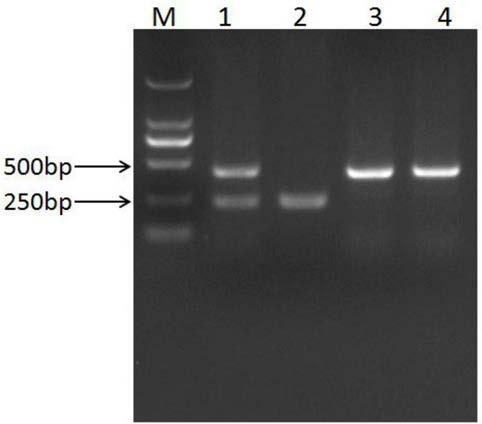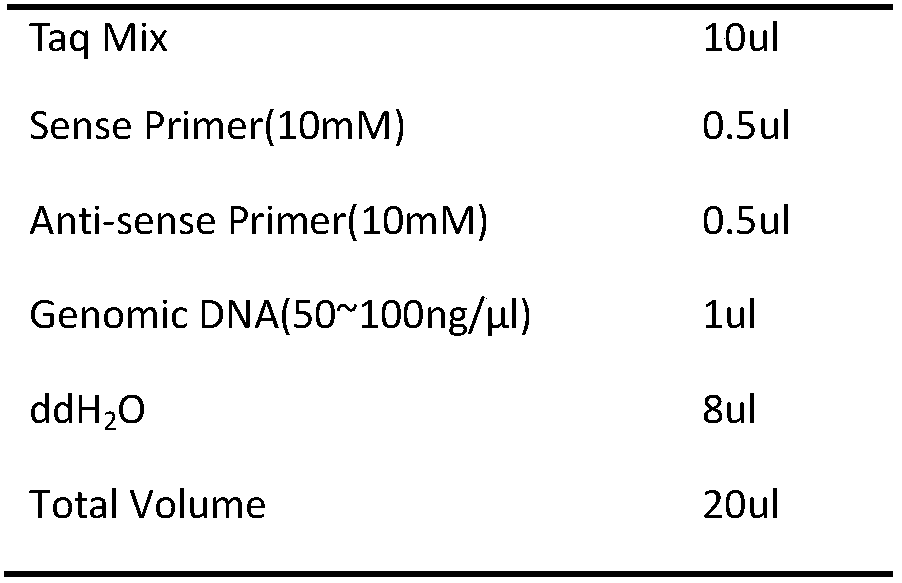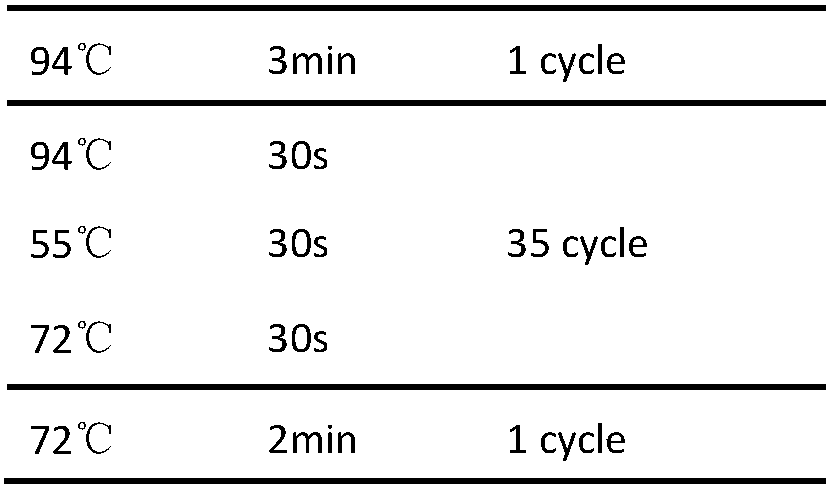Molecular marker related to generation of inguinal hernia/scrotal hernia in pigs and application thereof
A technique for inguinal and scrotal hernias, applied in the field of marker-assisted selection of pigs, can solve problems such as failure to find the exact cause
- Summary
- Abstract
- Description
- Claims
- Application Information
AI Technical Summary
Problems solved by technology
Method used
Image
Examples
Embodiment 1
[0022] Obtaining Segment of Pig PRKCE Gene and Establishment of SNP Detection Method
[0023] The experiment selected large white pigs, landrace pigs and their hybrid pig breeds, and designed the following primer pairs according to the pig PRKCE genome sequence (accession number Gene ID: 100524932). The specific sequences are as follows:
[0024] Forward primer F: 5'-ACCCTCAACGCTCTGTCC-3'
[0025] Reverse primer R: 5'-TAGGCCGCTTAACCAAAA-3'
[0026] PCR amplification was carried out in Large White pig, Landrace pig and hybrid pig genomic DNA using the above primer pairs.
[0027] The PCR reaction system is shown in Table 1.
[0028] Table 1 PCR reaction system
[0029]
[0030] The PCR reaction conditions are shown in Table 2.
[0031] Table 2 PCR reaction conditions
[0032]
[0033] The resulting PCR product was purified and cloned for sequence determination, and the sequencing work was completed by Beijing Aoke Dingsheng Biotechnology Co., Ltd. After blast comparis...
Embodiment 2
[0036] Detection and verification of polymorphism distribution of genetic markers of the present invention in different pig herds
[0037] In order to determine whether the SNP in the tenth intron region of the porcine PRKCE gene is related to the difference in pig phenotype, French Large White pigs (109 heads), French Landrace pigs (53 heads), American Large White pigs (39 heads) and Hybrid pigs (66 heads) were used as test materials, and the samples and data were collected from Zhejiang Kaisheng Ecological Agriculture Development Co., Ltd. Using conventional Taq α I-RFLP method was used for polymorphism detection, and the correlation between different genotypes of the SNP loci and pig inguinal scrotal hernia traits was analyzed. Independence test based on genotype frequency and gene frequency (X 2 ).
[0038] Table 3 PRKCE gene Taq α Comparison of the distribution of I-RFLP genotype frequency and allele frequency in patients with inguinal / scrotal hernia and normal indivi...
Embodiment 3
[0043] Application of rs328681942 site in large white pig breeding:
[0044] 50 American Large White pigs with inguinal hernia positive and 50 American Large White pigs with inguinal hernia negative in a pig farm were tested for molecular markers, using 5'-ACCCTCAACGCTCTGTCC-3' and R:5'-TAGGCCGCTTAACCAAAA-3 'Amplify the DNA and carry out restriction endonuclease Taq α I digestion, the results showed that a total of 50 samples of CC genotype were detected, all of which were diseased pigs, further confirming that the CC locus can be used as a potential genetic marker of inguinal scrotal hernia traits in Large White pigs.
PUM
 Login to View More
Login to View More Abstract
Description
Claims
Application Information
 Login to View More
Login to View More - R&D
- Intellectual Property
- Life Sciences
- Materials
- Tech Scout
- Unparalleled Data Quality
- Higher Quality Content
- 60% Fewer Hallucinations
Browse by: Latest US Patents, China's latest patents, Technical Efficacy Thesaurus, Application Domain, Technology Topic, Popular Technical Reports.
© 2025 PatSnap. All rights reserved.Legal|Privacy policy|Modern Slavery Act Transparency Statement|Sitemap|About US| Contact US: help@patsnap.com



